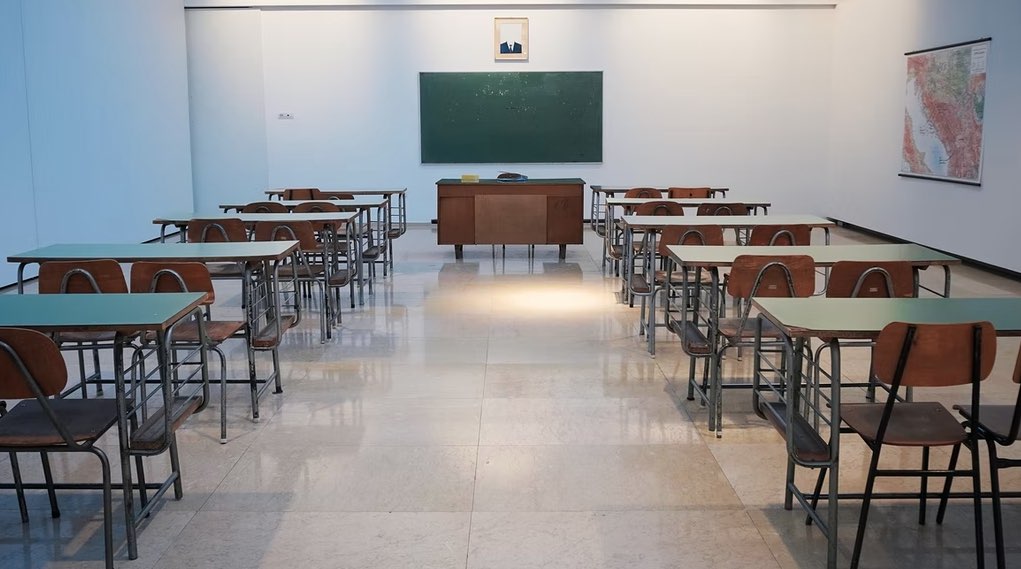Standing desks are gaining traction as a potentially transformative tool in educational environments. They offer various benefits that address both physical and mental well-being.
However, they also come with challenges that schools must consider for successful implementation. Here is a detailed overview of the potential advantages and drawbacks of standing desks in schools, as well as research insights and case study examples.
Let's get straight to the point
Standing desks in schools offer a fresh approach to tackling sedentary lifestyles and promoting better health and focus among students.
By allowing movement, which aids concentration and reduces stress, they can reduce obesity risks, improve posture, boost circulation, and support mental well-being.
These desks can be particularly beneficial for students with ADHD, offering a way to release energy constructively. However, there are challenges: physical fatigue from prolonged standing, higher costs, and classroom layout adjustments.
Balancing sitting and standing time is crucial for effective integration. Research and case studies show promise but suggest that gradual implementation and thoughtful design are essential for successful school adoption
Benefits Of Standing Desks For Children In Schools

1. Improved Physical Health
- Combating Sedentary Lifestyles: Extended periods of sitting are increasingly linked to health concerns in adults and children. In school settings, where students sit for hours each day, standing desks can be an antidote by encouraging regular movement and reducing sedentary behaviours.
- Reduced Obesity Risks: Standing instead of sitting has been shown to boost calorie expenditure. Research reveals that children using standing desks can burn 15-30% more calories than those who remain seated. Over time, this added activity can help reduce childhood obesity rates.
- Better Posture and Musculoskeletal Health: Traditional desks and extended sitting often contribute to poor posture and discomfort in children, particularly in the neck, shoulders, and back. Standing desks promote a more natural posture that aligns with the body’s structure, reducing strain and encouraging musculoskeletal health.
- Enhanced Circulation: Standing encourages better blood flow, vital for heart health and overall circulation. Improved circulation can help reduce the risks associated with extended periods of inactivity and may contribute to maintaining cardiovascular health in children.
2. Enhanced Focus And Academic Performance
- Improved Concentration and Attention: Studies suggest that students who use standing desks exhibit better concentration and engagement during lessons. The flexibility to stand and shift positions can reduce the urge to fidget, allowing students to channel their energy constructively.
- Reduced Fidgeting and Disruptive Behaviour: Standing gives students a degree of autonomy to shift their weight or adjust their posture without needing to leave their workspace. This mobility can help release pent-up energy, potentially leading to calmer behaviour and less classroom disruption.
- Increased Participation: Standing desks may encourage students to participate more actively in class. By reducing physical confinement, standing desks help create an environment conducive to interaction and engagement, positively impacting the learning experience.
3. Mental And Emotional Health Benefits
- Reduced Anxiety and Stress: Physical movement has proven benefits for mental health, including reducing anxiety and stress. By allowing for subtle movement, standing desks can contribute to a more relaxed classroom atmosphere, promoting well-being by releasing mood-enhancing hormones.
- Improved Mood and Emotional Resilience: Students who can move and adjust as needed experience improved mood and emotional well-being. This freedom can lead to a positive learning environment where students feel more comfortable and better supported.
4. Potential Benefits For Students With ADHD
- Encouraging Movement and Flexibility: Children with ADHD may face challenges staying still for extended periods. Standing desks, especially those with footrests or wobble boards, provide an opportunity to move, which can improve focus and reduce restlessness.
- Enhanced Focus for ADHD Students: For students with ADHD, the flexibility to stand and move as needed can make a noticeable difference in attention and engagement. These students often perform better when allowed to move, making standing desks a valuable tool in managing focus-related challenges.
Drawbacks Of Standing Desks For Children In Schools
1. Physical Fatigue And Discomfort
- Risk of Physical Strain: While standing can be beneficial, prolonged standing without breaks may lead to fatigue and discomfort, especially for young students. Common issues include soreness in the feet, legs, and lower back, which affects comfort and focus.
- Need for Gradual Transition: Most students are accustomed to sitting throughout the school day. Shifting to standing desks may require an adaptation period, and students may experience initial discomfort without proper guidance. To ease this transition, a balanced approach, alternating between standing and sitting, may be beneficial.
2. High Initial Costs And Classroom Layout Adjustments
- Cost Considerations: Standing desks are typically more expensive than standard desks, making implementation a financial challenge for schools, especially those with limited budgets. Investing in standing desks for each student can be a significant expense.
- Space Constraints and Classroom Layout Challenges: Standing desks require strategic placement to avoid crowding and ensure accessibility for students and teachers. Classroom layouts may need to be redesigned to allow students to stand without obstructing movement or creating distractions for others.
3. Potential Distraction And Adjustment Challenges
- Classroom Routine Disruptions: Some students may find adjusting to a standing desk challenging, potentially interrupting established classroom routines. Standing may initially distract students, and they need to become more accustomed to alternating between sitting and standing.
- Increased Movement Leading to Distractions: While moderate movement is beneficial, excessive movement can be disruptive to other students and may affect the classroom dynamic. Teachers may need to set guidelines to help students use standing desks in a way that minimises distraction.
Research Evidence On Standing Desks In Schools

Emerging research on standing desks in educational settings offers promising but mixed insights. Some studies support their role in enhancing physical health and focus, while others note potential challenges in classroom management and physical strain.
- Physical and Academic Improvements: Several studies report benefits like increased caloric burn and reduced neck and back pain among students. Moreover, these studies suggest improvements in focus and academic engagement, with standing desks positively impacting overall classroom behaviour.
- Challenges and Limitations: On the other hand, some studies highlight that standing desks may distract certain students and create logistical challenges within traditional classroom layouts. Furthermore, extended use of standing desks could lead to physical strain without guidance on balancing standing and sitting.
Case Studies And Pilot Programs
- Atwater Elementary School (Wisconsin): Atwater Elementary implemented a pilot study using standing desks, measuring activity levels with accelerometers. The results showed increased movement among students and improved focus during lessons. Teachers also reported that students appeared more engaged and physically active throughout the day.
- Australian Pilot Programs: Australian schools trialled standing desks with similarly positive results, observing reduced neck and back discomfort reports among students. The studies noted improved classroom engagement, with teachers reporting that students were less fidgety and more attentive.
Conclusion
Standing desks offer promising benefits for physical health, focus, and mental well-being in school settings. They address issues like sedentary behaviour, posture, and engagement.
While they can reduce fidgeting and enhance classroom participation, they also come with challenges, such as physical fatigue, higher costs, and potential classroom distractions.
A balanced approach, allowing students to alternate between sitting and standing, may help schools integrate these desks effectively, creating an active and supportive learning environment that fosters health and academic performance.
As research and pilot programs grow, standing desks could increasingly support a more dynamic and health-focused educational experience for students.
FAQs About Standing Desk
Standing desks seem to help ease back pain, but doctors don't know how much time you need to stand to get this benefit. More productive: In a study of call center employees, those with standing desks were 45% more productive on a daily basis than employees who sat during their shift.
Desks allow children to comfortably sit while they're studying and doing homework. They also help kids focus on what they're doing because their design favors comfort. If kids didn't have desks to use while they're studying, it would be much harder for them to pay attention to the content, do their homework, and more.
Despite existing for hundreds of years, standing desks are now part of the latest fad on office productivity and well-being. Many office executives are rushing to replace their traditional equipment as they believe that standing desks promote better health and higher productivity.
Sitting behind your desk all day is bad for your health and experts have long been advising people to stand at their workstations for about 15 minutes an hour. But a University of Waterloo professor says his research shows that people should be standing for at least 30 minutes per hour to get health benefits.
Those who used standing desks during the studies reported an improvement of up to 32% in their lower back and neck pain after using the desk for a period of several weeks.

